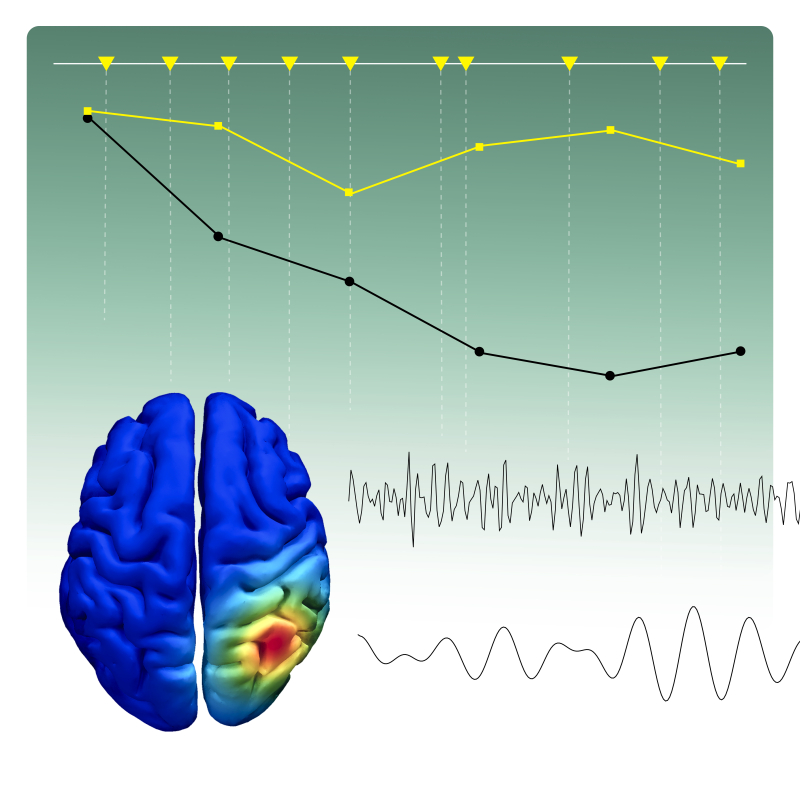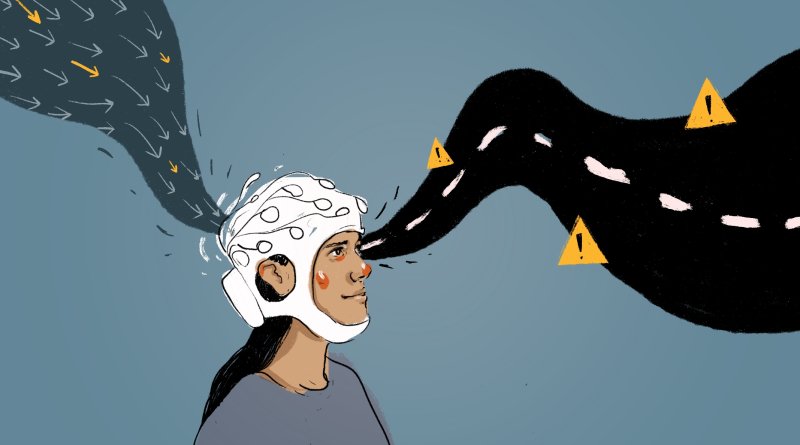

Have you ever found yourself behind the steering wheel unable to keep your attention on the road as the journey progresses? What happens in this and many other daily situations is due to a phenomenon known as decreased vigilance: it is difficult for us to maintain our attention for a prolonged period of time, which is why it declines over time.
The centrality of vigilance in many daily and work tasks, and as a relevant symptom in neurological disorders, and its possible consequences, have motivated the research carried out by Klara Hemmerich, Juan Lupiáñez, Fernando Luna and Elisa Martín-Arévalo. In their studies, they have used a non-invasive brain stimulation technique: transcranial direct current stimulation (tDCS). tDCS applies, through a series of electrodes placed on the scalp, a direct electrical current, whose resulting electric field can permeate the brain. This allows the ongoing neural activity to be modulated, while the participants perform a behavioral task that evokes this decrease in vigilance. In this research, this methodology has been used in conjunction with the recording of electroencephalographic measurements to better understand what happens in the brain during loss of vigilance and the effect that electrical stimulation has on brain and behavior.
In the most recent study, the researchers have replicated previous results, giving more strength to the finding that by stimulating the right posterior parietal region, promoting neural activity in that region, the decrease in vigilance can be significantly mitigated.
In addition, through electroencephalography recording, this study proposes a new brain wave index that could serve as a possible future predictor of the efficacy of stimulation. Based on the changes experienced by participants in this index, it has been possible to distinguish participants who benefit greatly from stimulation (mitigation of the decrease in vigilance) from others for whom the intervention appears to be less effective.
These results are highly relevant for future transfer to settings where the decrease in vigilance carries serious consequences (work and clinical settings), being able to better estimate the expected results of an intervention based on individual measures that are relatively easy and inexpensive to obtain.
Contact:
Klara Hemmerich, hemmerich@ugr.es
Full reference:
Hemmerich, K., Lupiáñez, J., Luna, F. G., & Martín-Arévalo, E. (2023). The mitigation of the executive vigilance decrement via HD-tDCS over the right posterior parietal cortex and its association with neural oscillations. Cerebral Cortex. https://doi.org/10.1093/cercor/bhac540

